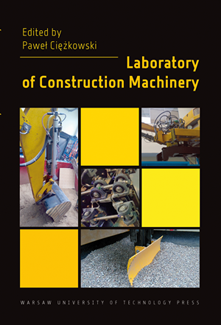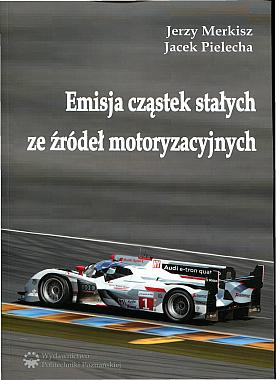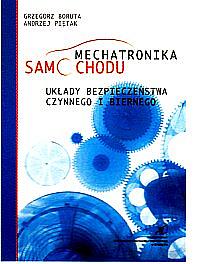FOREWORD 9
1. DETERMINATION OF STRENGTH PROPERTIES OF GRANULAR AND BRITTLE
MATERIALS 11
1.1. Theoretical introduction 11
1.1.1. Testing of soil and rock 11
1.1.2. Testing of uniaxial tensile strength 14
1.1.3. Uniaxial compression strength tests 15
1.1.4. Determination of strength parameters of soil and rock materials in triaxial
compression tests 18
1.2. Description of the stands. 20
1.2.1. Test stand for rock strength and elementary crushing processes – hydraulic press 20
1.2.2. Direct shear test 22
1.2.3. Triaxial compression apparatus 23
1.3. EXERCISE 1. Determination of uniaxial compressive and tensile strengths of rocks 24
1.3.1. Objective of the exercise 24
1.3.2. Course of the exercise 24
1.4. EXERCISE 2. Study on elementary crushing processes 24
1.4.1. Objective of the exercise 24
1.4.2. Course of the exercise 24
1.5. EXERCISE 3. Determination of Coulomb-Mohr characteristics – direct shear apparatus 25
1.5.1. Objective of the exercise 25
1.5.2. Course of the exercise 25
1.5.3. Elaboration of results. 26
1.6. EXERCISE 4. Determination of Coulomb-Mohr characteristics – triaxial compres-
sion apparatus 27
1.6.1. Objective of the exercise 27
1.6.2. Course of the exercise 27
2. CRUSHING OF BRITTLE MATERIALS 29
2.1. Theoretical Introduction 29
2.1.1. General information. 29
2.1.2. Classifi cation of the crushing product 29
2.1.3. Terminology related to construction aggregates according to the standard [16]. 31
2.2. Description of the laboratory stands 31
TABLE OF CONTENTS
6
2.2.1. Laboratory jaw crusher 31
2.2.2. Laboratory impact crusher. 35
2.2.3. Laboratory cone crusher 36
2.2.4. Sieve analysis shaker 37
2.3. EXERCISE 1. Rock crushing 38
2.3.1. Objective of the exercise 38
2.3.2. Course of the exercise 38
2.4. EXERCISE 2. Study of crushing processes in a model jaw crusher 40
2.4.1. Objective exercise 40
2.4.2. Course of the exercise 41
3. STUDIES ON THE MECHANICS OF THE CUTTING PROCESS OF BRITTLE
MATERIALS 43
3.1. Theoretical introduction 43
3.1.1. General comments 43
3.1.2. Fundamentals of brittle material machining 43
3.1.3. Overview of tools and their working conditions using the example of an as-
phalt milling tool 46
3.2. Test stand overview 50
3.3. Measurement system. 52
3.4. EXERCISE 1. Asphalt milling 53
3.4.1. Aim of the exercise 1. 53
3.4.2. Conducting the exercise 53
3.4.3. Results analysis 54
3.5. EXERCISE 2. Brittle materials cutting 55
3.5.1. Aim of the exercise 2. 55
3.5.2. Conducting the exercise 55
3.5.3. Results analysis – Cutting force in function of time and tool displacement 55
4. INTERACTION OF HEAVY MACHINERY WITH THE SOIL − SOIL CHANNEL 57
4.1. Theoretical introduction 57
4.1.1. General remarks. 57
4.1.2. Track shoe types 57
4.1.3. Tractive force generated by flat shoes 58
4.1.4. Influence of anti-skid grousers on the tractive force 62
4.1.5. Track slip 62
4.2. Laboratory stand 63
4.2.1. Track-soil interaction of off-road undercarriages 63
4.2.2. Model tests of resistance to operation of working tools of earthmoving machines 64
4.3. EXERCISE 1. Track-soil interaction of off-road undercarriages 68
4.3.1. Aim of the exercise 68
4.3.2. Conducting the exercise 69
4.3.3. Results preparation 69
4.4. EXERCISE 2. Model tests of resistance to operation of working tools of earthmov-
ing machines 69
4.4.1. Aim of the exercise 69
4.4.2. Conducting the exercise 70
4.4.3. Results preparation 70
7
5. VIBRATORY CONVEYORS 71
5.1. Theoretical introduction 71
5.1.1. General remarks. 71
5.1.2. Single grain motion theory 74
5.2. EXERCISE 1. Vibrating conveyor 81
5.2.1. Aim of the exercice 81
5.2.2. Conducting the exercise 81
6. PLC PROGRAMMING 83
6.1. Introduction. 83
6.1.1. PLC structure 86
6.2. The basic elements of sucosoft s40 programming language 87
6.2.1. Program structure 88
6.2.2. Declaration of real variable address 88
6.2.3. Program block 90
6.3. EXERCISE 1. PLC programming 93
6.3.1. Aim of the exercise 93
6.3.2. Conducting the exercise 94
7. SLEWING MECHANISM 97
7.1. Theoretical introduction 97
7.1.1. Functions analysis of the slewing mechanism equipped with a reductor 97
7.1.2. Control structure of the slewing mechanism operation 98
7.2. Testbench 101
7.2.1. General description of the testbench 101
7.2.2. Descriptions of hydraulic elements used in the testbench 103
7.3. EXERCISE 1 106
7.3.1. Aim of the exercise 106
7.3.2. Conducting the exercice 106
8. ANALYSIS OF THE EXCAVATION PROCESS IN AN AUTOMATIC CYCLE OF
A BACKHOE EXCAVATOR 109
8.1. Theoretical introduction 109
8.2. Laboratory stand 113
8.3. EXERCISE 1. Testing the influence of the shape of the working tool on the energy
efficiency of the digging process 117
8.3.1. Aim of the exercise 117
8.3.2. Conducting the exercise 118
8.4. EXERCISE 2. Testing the impact of changing the cutting angle of the tool on the
energy consumption of the excavating process 119
8.4.1. Aim of the exercise 119
8.4.2. Conducting the exercise 119
LITERATURE 121
LABORATORY OF CONSTRUCTION MACHINERY
CIĘŻKOWSKI P.
Budowa i eksploat.maszyn, Nowości36.00zł
Na stanie
| Autor | |
|---|---|
| ISBN | 978-83-8156-611-7 |
| Liczba stron | |
| Rok wydania | |
| Wydawca |
Napisz pierwszą opinię o „LABORATORY OF CONSTRUCTION MACHINERY” Anuluj pisanie odpowiedzi
Podobne produkty
Szukaj
Wybrane
Kategorie
- Albumy (93)
- Architektura i urbanistyka (287)
- Automatyka i robotyka (50)
- Beletrystyka (14)
- Bez kategorii (4)
- Bezpieczeństwo (14)
- Bhp i ergonomia (45)
- Budowa i eksploat.maszyn (210)
- Budownictwo (292)
- Chemia i fizyka (43)
- Dom i ogród (2)
- Ekonomia (27)
- Elektronika i elektrotechnika (254)
- Finanse i rachunkowość (14)
- Hobby (9)
- Informatyka (740)
- Inne (305)
- Inżynieria biomedyczna (29)
- Inżynieria materiałowa (51)
- Języki obce (33)
- Kalkulatory (1)
- Literatura popularno-naukowa (99)
- Logistyka i transport (102)
- Lotnictwo (29)
- Marketing (30)
- Matematyka i statystyka (120)
- Mechanika (164)
- Miernictwo (8)
- Nauki humanistyczne (79)
- Nowości (136)
- Ochrona i inżynieria środowiska (158)
- Prawo (6)
- Przemysł spożywczy (1)
- Sztuka (30)
- Tania książka (76)
- Zarządzanie (198)








Opinie
Na razie nie ma opinii o produkcie.